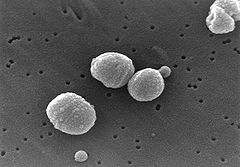 What is a normal titer?
What is a normal titer?Protection against infection and colonization is associated with specific IgG concentrations of 1.3 mcg/ml, according to most laboratories (some labs use a 2.0 mcg/ml cutoff point).
A second component in judging response is the final concentration of antibodies after immunization regardless of increase from preimmunization concentration. An adequate response is a post-immunization antibody concentration of more than 1.3 mcg/ml, even in the absence of a fourfold increase. If pre-immunization titers are above 5, the patient is not likely to respond for those serotypes with a significant increase in the titer.
How are serotype levels different in children and adults?
Children 2 to 5 years of age are normally expected to have an adequate response to more than 50% of serotypes tested. Patients 6 years or older are normally expected to respond to more than 70% of the serotypes tested.
The consensus is that 50% response in children, and 70% response in adults to Pneumovax 23 is considered normal.
Typically, adults respond to Pneumovax until age 85. A subset of patients only have temporary polysaccharide response, so if concerned about the patient, follow the antibody titers, for example, 6 months after the immunization.
There is an increased risk of pneumococcal disease in patients with atopic conditions. CDC recommends pneumococcal polyvalent-23 vaccine for all adults with asthma.
References
Assessment and clinical interpretation of polysaccharide antibody responses. Kenneth Paris and Ricardo Sorensen. Annals of Allergy, Asthma, and Immunology, 2007; volume 99, Issue 5, Pages 462-464, and AAAAI Ask the Expert, 2012.
Interpretation of antibody response to pneumococcal vaccines - AAAAI Ask the Expert, 2012.
CDC recommends pneumococcal polyvalent-23 vaccine for all adults with asthma
Increased risk of pneumococcal disease in patients with atopic conditions
Immunodeficiency - Twitter summary from 2012 #AAAAI meeting
Image source: SEM micrograph of S. pneumoniae. Wikipedia, public domain.